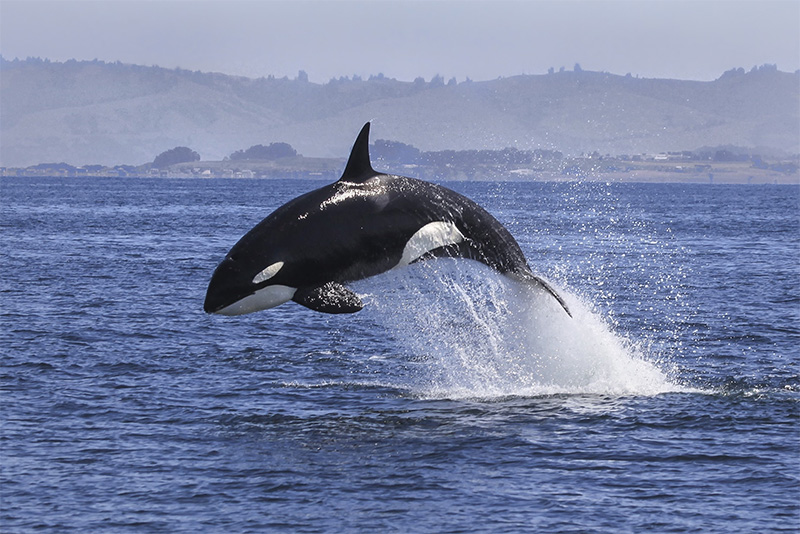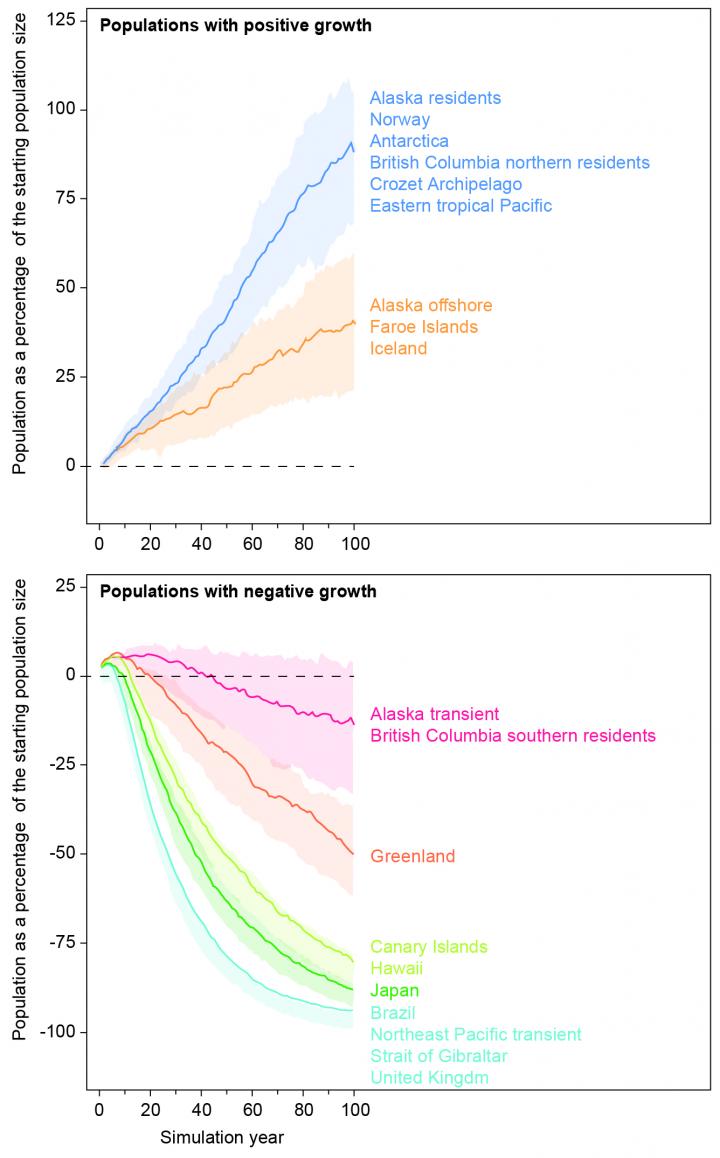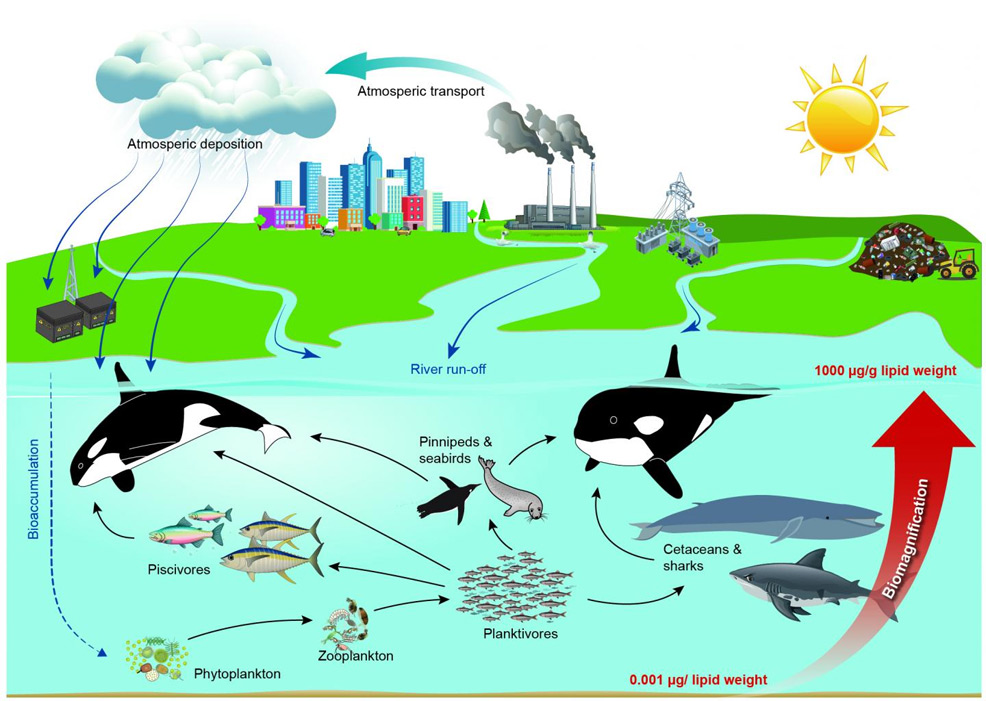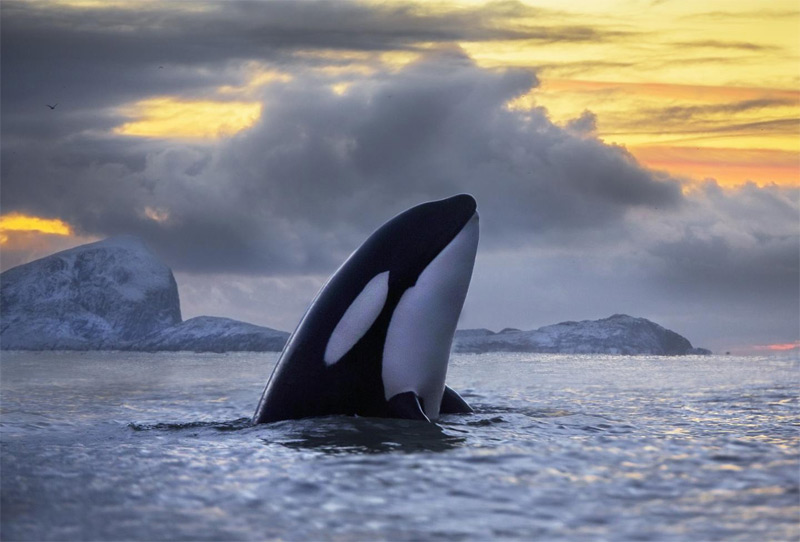
1st October 2018 Killer whale populations at risk of collapse by mid-century A study in the journal Science concludes that polychlorinated biphenyls (PCBs) could lead to a halving of killer whale populations in the most heavily contaminated areas within 30-50 years.
More than 40 years after the first initiatives to ban PCBs, the chemical pollutants remain a deadly threat to animals at the top of the food chain. A new study published in the journal Science shows that the current concentrations of PCBs could lead to the disappearance of half of the world's populations of killer whales from the most heavily contaminated areas within a period of just 30-50 years. Killer whales (Orcinus orca) form the last link in a long food chain and are among the mammals with the highest level of PCBs (polychlorinated biphenyls) in their tissue. Researchers have measured values as high as 1,300 milligrams per kilo in the fatty tissue (blubber) of killer whales. For comparison, a large number of studies show that animals with PCB levels as low as 50 milligrams per kilo of tissue may show signs of infertility and severe impacts on the immune system. Together with colleagues from a wide range of international universities and research institutions, researchers at Aarhus University in Denmark have documented that the number of killer whales is rapidly declining in 10 out of the 19 killer whale populations investigated, and that the species may disappear entirely from several areas within a few decades.
Killer whales are particularly threatened in heavily contaminated areas like the waters near Brazil, the Strait of Gibraltar and the UK. The researchers estimate that around the British Isles, less than 10 killer whales are now remaining. Also along the east coast of Greenland, killer whales are affected by the high consumption of sea mammals like seals. The killer whale is one of the most widespread mammals on Earth, being found in all of the world's oceans from pole to pole. But today, only those living in the least polluted areas possess a large number of individuals. In addition to seals, the diet of killer whales includes large fish, such as tuna and sharks. These accumulate PCBs and other pollutants stored at successive levels of the food chain. It is these populations of killer whales that have the highest PCB concentrations and are at the highest risk of population collapse. Killer whales that primarily feed on smaller fish such as herring and mackerel have a significantly lower content of PCBs and are thus at lower risk of effects.
PCBs have been used around the world since the 1930s. More than a million tonnes were produced and used in electrical components and plastics. Together with DDT and other organic pesticides, PCBs have spread around the global oceans. Through the 1970s and 1980s, PCBs were banned in several countries. Then in 2004, through the Stockholm Convention, more than 90 nations committed to phasing out and disposing of PCBs and a range of other persistent organic pollutants (POPs). However, PCBs only slowly degrade in the environment. They are also passed down from a mother orca to its offspring through the mother's fat-rich milk – meaning that the hazardous substances remain in the bodies of the animals. "We know that PCBs deform the reproductive organs of animals such as polar bears. It was therefore only natural to examine the impact of PCBs on the scarce populations of killer whales around the world," says Professor Rune Dietz, co-author of the article. The research team reviewed all the existing literature and compared all data with their own most recent results. This provided information about PCB levels in more than 350 individual killer whales around the globe – the largest number ever studied. Applying models, the researchers then predicted the effects of PCBs on the number of offspring, as well as on the immune system and mortality of the killer whale over a period of 100 years. "The findings are surprising," says postdoc Jean-Pierre Desforges, also from Aarhus University. "We see that over half of the studied killer whale populations around the globe are severely affected by PCBs." The situation is worst in the oceans around Brazil, the Strait of Gibraltar, the northeast Pacific and the UK. Here, the models show that the populations have been halved during the half century where PCBs have been present. "In these areas, we rarely observe newborn killer whales," says Ailsa Hall, from the Sea Mammal Research Unit in Scotland. "As the effects have been recognised for more than 50 years, it is frightening to see that the models predict a high risk of population collapse in these areas within a period of 30-40 years," says Jean-Pierre Desforges. A female killer whale may live for 60-70 years, and although the world took its first steps to phase out PCBs more than 40 years ago, killer whales still have high levels of PCBs in their bodies. "This suggests that the efforts have not been effective enough to avoid the accumulation of PCBs in high trophic level species that live as long as the killer whale does. There is therefore an urgent need for further initiatives than those under the Stockholm Convention," concludes Paul Jepson, from the Zoological Society of London, another killer whale expert and co-author of the article. In the oceans around Alaska, the Antarctic, Faroe Islands, Iceland and Norway, the prospects are not so gloomy. Here, killer whale populations grow and the models predict that they will continue to do so throughout the next century.
Comments »
If you enjoyed this article, please consider sharing it:
|










